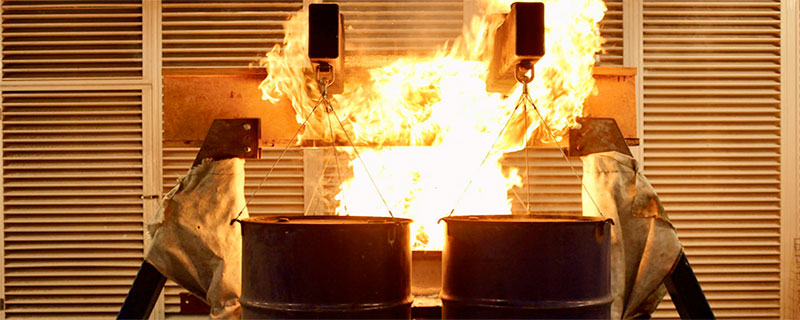World-First Study: Fire Safety in Timber-and-Steel
The research team will test timber and steel elements using small-scale, medium-scale and large-scale testing. (Photo Credit: University of Canterbury)
Steel-framed buildings. combined with cross-laminated timber walls and floors could unlock a $1 billion boost for New Zealand’s wood processing industry.
A team of New Zealand experts will tackle fire safety concerns in timber-and-steel-framed buildings inside a purpose-built fire lab as part of a world-fire project led by the University of Canterbury, which, if successful, could rapidly increase the volume of timber used in buildings.
Led by Associate Professor Anthony Abu, structural fire engineer and the project’s lead researcher, the tests will help develop new engineering design methods and guidelines, thus allowing mass timber walls and floors to be safely combined with steel frame construction: “One of the most pragmatic uses for mass timber products is in hybrid timber-steel buildings which combine economical design and construction practices with sustainability benefits.”
Abu’s team, which includes UC Civil and Natural Resources Engineering Lecturer Dr Paul Horne and UC School of Forestry Senior Lecturer Dr Hyungsuk Thomas Lim, is working on the study – funded by the Building Research Association of New Zealand (BRANZ) – and will investigate the performance of cross-laminated timber (CLT) floors in combination with steel beams as a safer and more sustainable building option.
“What makes financial sense, and to some extent engineering sense, is to progressively increase the amount of timber used in the building industry,” according to Abu, who is also working with Christchurch engineering firm PTL Structural and Fire to bring the project to life. “However, we need to get fire safety and structural performance right before that can happen.”
Wood Central understands that while the fire resistance of steel and timber has long been established (separately), there are many unknowns about how heated steel beams and columns will interact with timber walls and floors when loaded and exposed to fire and uncertainties about the whole structure’s performance: “The two materials will expand differently when we heat them, so that can be an issue at those interface points where they connect. The compatibility of the two materials is a key issue that we want to investigate further.”
Abu’s team will build a series of structures inside the University of Canterbury’s Fire Engineering Lab. The tests will include small-scale studies using segments of different types of timber, medium-scale studies involving bedroom-sized compartments, and finally, a full-scale building to test fire dynamics and structural integrity.
If successful, the project could lead to a NZ$ $1.2 billion boost in NZ’s timber processing industry, according to Abu, who said about $199 million in raw log exports – mostly to China – could be deferred in favour of investment instead in driving on-shore value-added processing of sawn timber.
“The outcome we want for New Zealand is a thriving, high-value domestic timber processing industry supporting safer and more sustainable hybrid timber buildings,” he said, with major implications for low-cost and affordable housing: “We believe our research programme can remove the fire safety barrier preventing hybrid timber-steel construction from becoming mainstream, and as a result improve housing affordability and supply and reduce carbon emissions by over one million tonnes annually as mass timber replaces high-emission materials.”
Source: Wood Central (New Zealand)









Leave a Reply
Want to join the discussion?Feel free to contribute!